Tiktaalik: fish with lungs, neck and almost real limbs (7 photos)
Tiktaalik is a strange fish. So strange that it’s not easy to recognize the fish in it. Every time I look at this animal, I wonder: is this my ancestor? 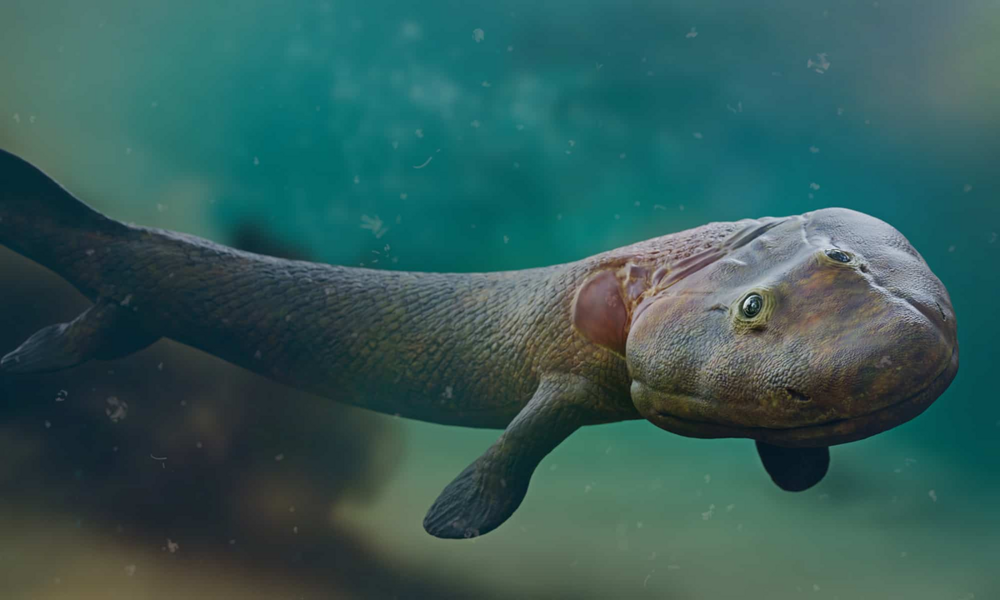
Author, I am your great-great-great-...-grandfather!
Scientists say: it is possible, but not a fact. Tiktaalik can be either our ancestor or our second cousin. It’s difficult to understand for sure, because Tiktaalik arose 385 million years ago. And although we cannot clearly trace the ancestry, we understand exactly why they looked like the fruit of an amphibian love affair with a fish. 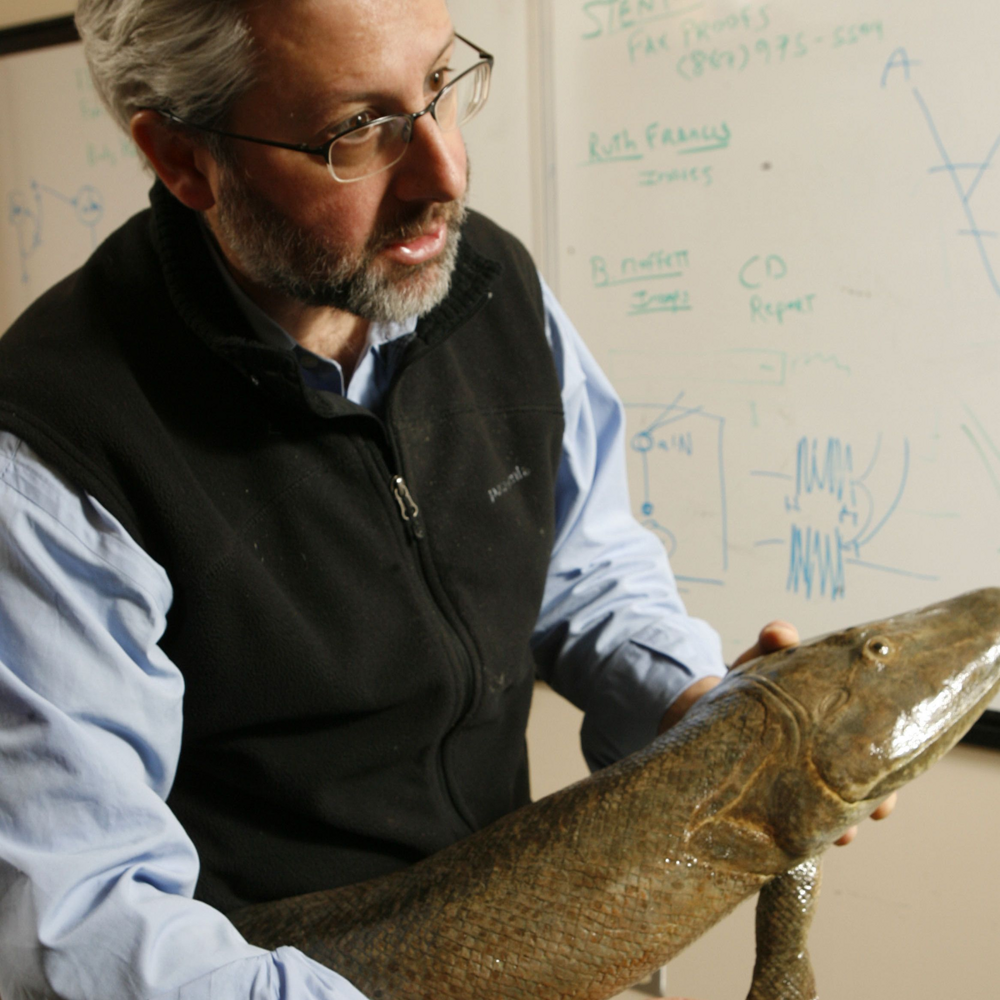
Scientists continue to interrogate the Tiktaalik about our family ties, but they are silent as fish.
Our heroes were discovered in Northern Canada. In the Devonian period it was located almost at the equator. In those days, the local plains were something between river valleys, swamps and dense tropical forests. Rotting leaves absorbed oxygen from the water, and debris of dead tree ferns and mosses created ponds and dams. The abundance of free organic matter attracted a lot of animals of all types of structure. 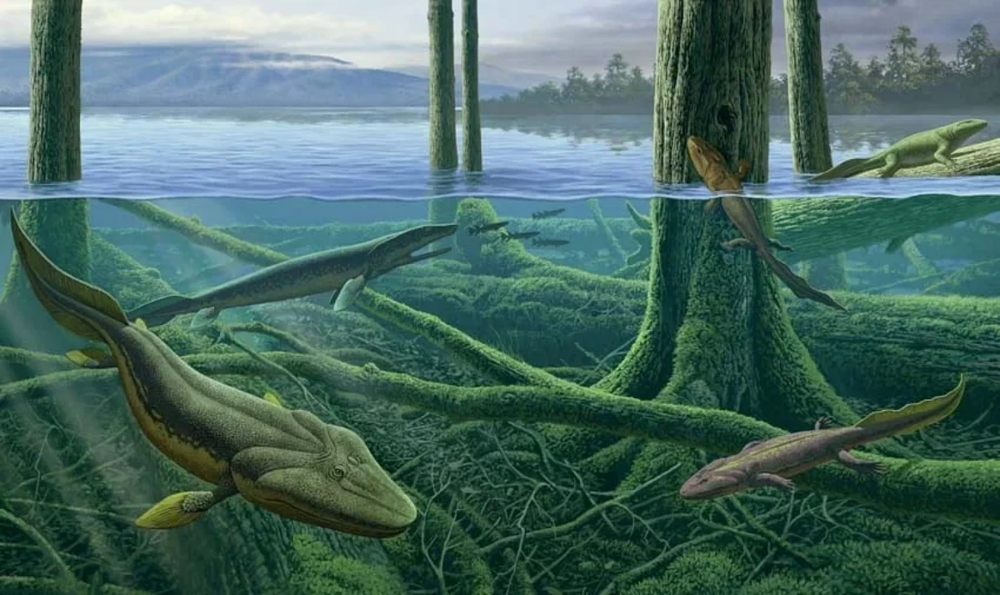
Organisms that break down organic matter consume a lot of oxygen. And the lower the oxygen content in the water, the lower the rate of decomposition, and the more organic matter accumulates in it. Vicious circle!
To survive here, Tiktaalik have changed a lot. They solved the problem of lack of oxygen in an ingenious way: they acquired lungs. True, in order to breathe deeply, the fish had to abandon openwork and light ribs in favor of stronger bones, on which there was room for the attachment of intercostal muscles. After all, neither Tiktaalik nor you and I can breathe without them. 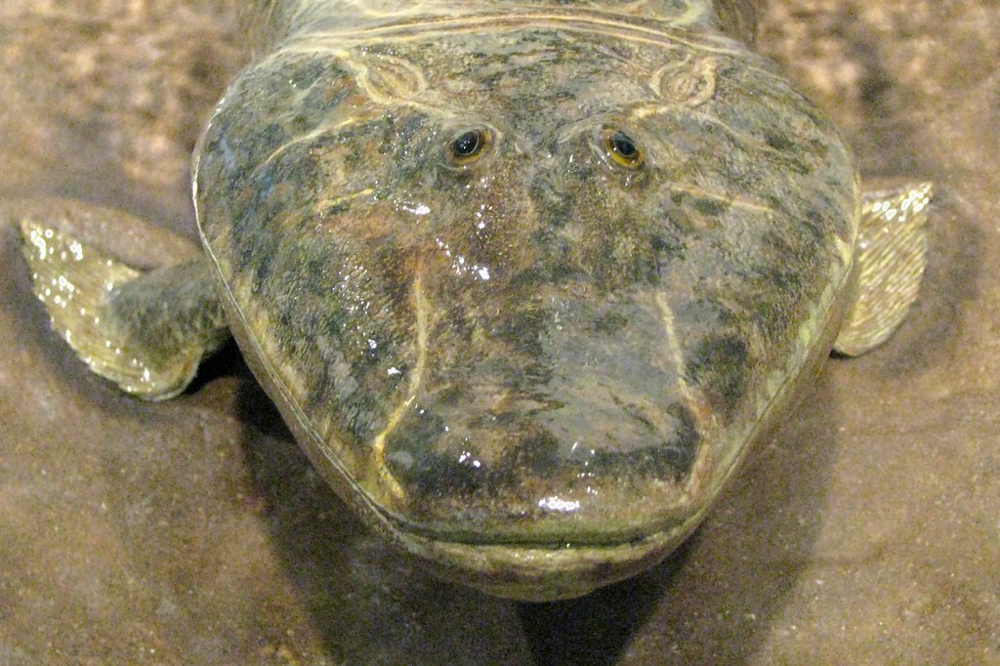
Hurray, atmospheric oxygen! I've been dreaming about it since the Cambrian period!
They solved the problem of moving in difficult terrain no less radically: they turned fins into limbs! The pectoral fins were additionally reinforced with strong bones and acquired wrist joints. In modern tetrapods they are responsible for the movements of the hands. The hind legs also changed: they became longer and attached to a solid pelvis, which is not found in ordinary fish. 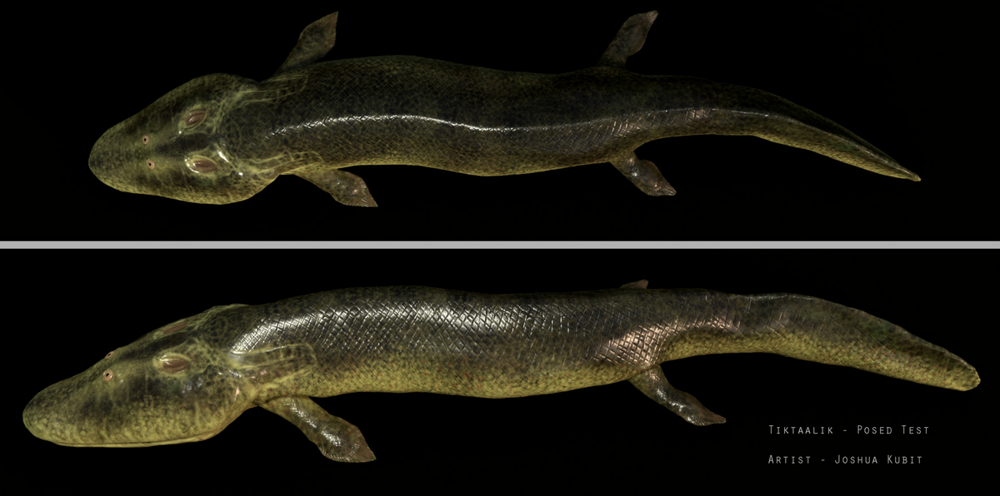
Yes, their pectoral and ventral fins have become stronger. But the back one was missing. There may not have been a tail one, but we are not sure yet.
Such modifications to the fins provided them with strong muscles and a large number of degrees of freedom. Tiktaalik could push aside seaweed and push off from sunken trees! And modern mathematical models show that he could even crawl from one body of water to another. 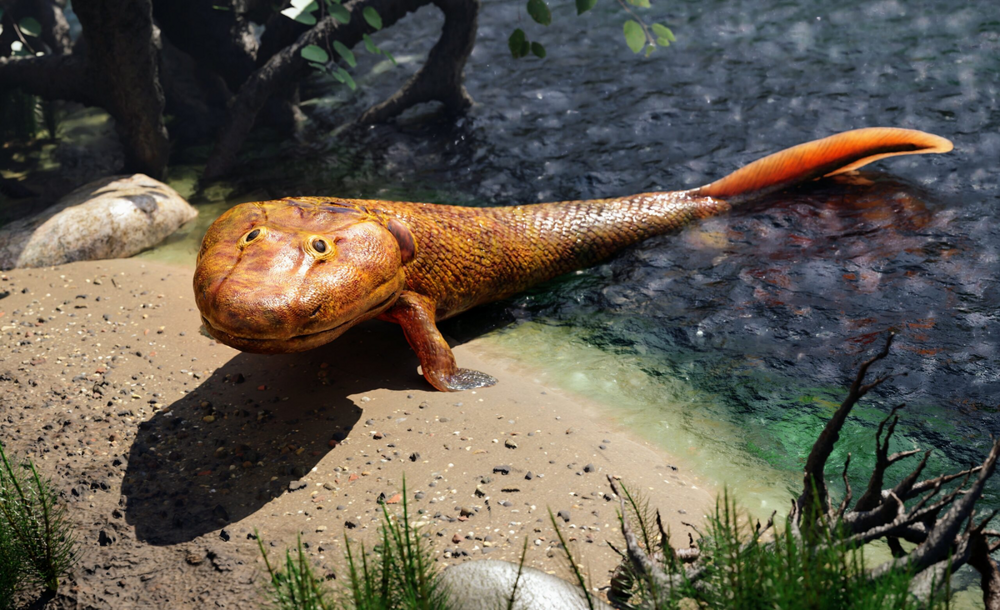
But he definitely couldn’t lift himself up on his fins like that. They were still too thin and weak.
But the fish rarely left the shallow waters. Usually she lay at the bottom of a muddy river and slowly shook her triangular head on a short neck, like some kind of crocodile. The ancient sub-amphibian waited for unwary prey and hid from the gaze of dangerous predators. However, she had few enemies. A giant 2.7 meters long cannot be gobbled up so easily. 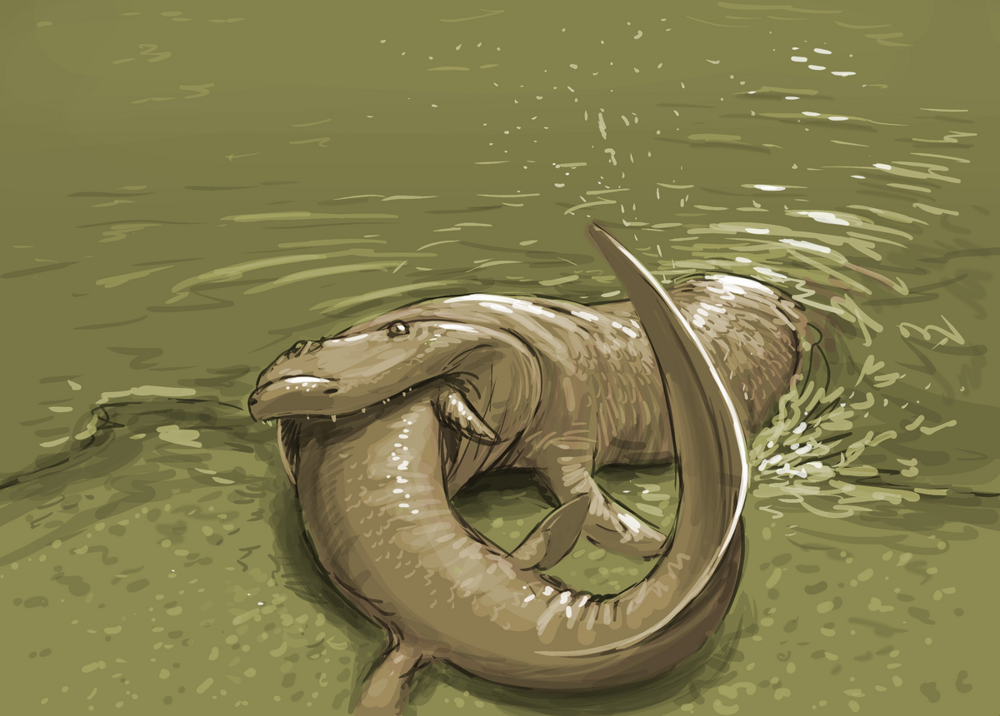
It is quite possible that the main enemies of the Tiktaaliks were the larger Tiktaaliks.
Tiktaalik disappears from the fossil record approximately 370 million years ago. But is he extinct? Maybe his descendants fly in the skies, jump across fields and watch stupid programs on TV?






























